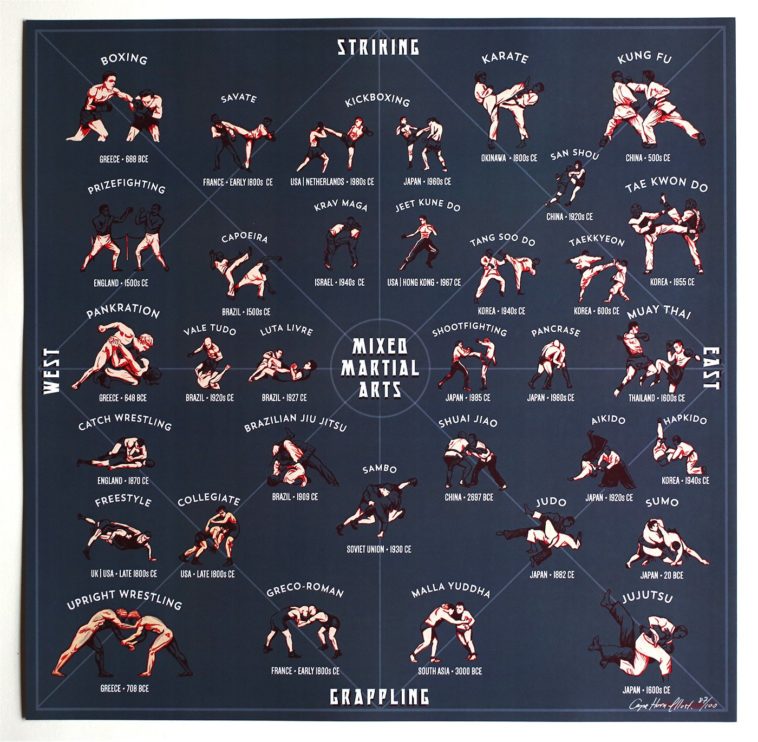The Advancement And Progression Of Martial Arts: Tracing Its Roots From Ancient Times To Contemporary Practices
The Advancement And Progression Of Martial Arts: Tracing Its Roots From Ancient Times To Contemporary Practices
Blog Article
Material Composed By-Svenstrup Whitaker
Step into the globe of martial arts, where old beginnings and contemporary strategies collide in an exciting journey of discipline and self-discovery.
As you explore the background and evolution of this exciting art kind, prepare to be captivated by the cultural impacts, technological advancements, and profound viewpoint that have formed it over centuries.
From the battlegrounds of old human beings to the training premises of today, martial arts have actually stood the test of time, continuously adapting and growing.
Each strike, each motion, lugs with it the weight of many years of practice and knowledge, gave via generations. This is a story of resilience, of warriors that looked for not just physical expertise, yet likewise self-confidence and harmony.
Join us on this amazing expedition as we discover the tricks, the tales, and the transformational power of martial arts.
Get ready to be motivated, tested, and for life altered by the history and advancement of martial arts.
Cultural Influences on Martial Arts
As you discover the background and evolution of martial arts, you'll promptly uncover the fascinating ways in which social impacts have formed these combat strategies.
From the ancient civilizations of China and India to the more current developments in Japan and Brazil, martial arts have been heavily influenced by the societies in which they came from.
For instance, Chinese martial arts, such as Kung Fu and Tai Chi, are deeply rooted in the viewpoint of Taoism and the idea of Yin and Yang.
In contrast, Japanese martial arts, like Karate and Judo, show the samurai warrior practices and the values of discipline and honor.
In a similar way, Brazilian fighting style, Capoeira, integrates components of African dancing and music, reflecting the social heritage of African slaves in Brazil.
These social affects not just provide each fighting style its one-of-a-kind qualities however also offer a deeper understanding of the historic and social contexts in which they evolved.
Technical Innovations and Martial Arts
With the surge of advanced weapons and innovative training tools, you've had the ability to enhance your abilities and adapt to the ever-changing battle landscape.
Technological advancements have changed the method martial arts are practiced and taught. Virtual reality simulations now permit you to learn sensible battle circumstances without the threat of physical harm. High-speed video cameras record every move, allowing you to examine and excellent your techniques. https://selfdefensestepsforawoman88888.loginblogin.com/36610223/understand-the-transformative-power-of-martial-arts-in-your-child-s-life-as-it-cultivates-confidence-and-personality-from-an-onset-start-the-trip-to-release-their-full-potential-today , breathing, and muscular tissue activation, supplying immediate responses on your performance.
Furthermore, the development of customized devices, such as resistance bands and agility ladders, has actually enabled you to improve your speed, stamina, and agility. These technological advancements have not just made training a lot more efficient but have actually additionally pushed the boundaries of what is feasible in martial arts, allowing you to get to new elevations in your practice.
The Philosophy and Concepts of Martial Arts
The philosophy and principles of martial arts are deeply rooted fit your mindset and instilling self-control, emphasis, and regard in your technique.
1. State of mind: Martial Arts teaches you to establish a solid and resilient frame of mind. It enables you to overcome obstacles both on and off the mat, pushing your restrictions and being determined when faced with difficulty.
2. Self-control: Martial Arts demands discipline and self-constraint. Through regular training and adherence to strict regulations and techniques, you learn to control your impulses and establish a solid job ethic.
3. Emphasis: Martial Arts requires intense emphasis and concentration. By educating your mind to be present in the moment, you improve your capability to react swiftly and efficiently during battle circumstances.
4. Respect: Martial Arts emphasizes regard for oneself, instructors, educating partners, and opponents. It shows you to value the abilities and experiences of others, cultivating a feeling of friendship and sportsmanship.
Final thought
Congratulations on completing your trip via the exciting globe of martial arts! Throughout this exploration, you have experienced the rich background and impressive advancement of these fight techniques.
From their ancient beginnings to the modern-day strategies we see today, martial arts have been formed by cultural impacts.
The combination of technology has additionally played a substantial role in reinventing the way martial arts are taught and practiced in today day.
Nevertheless, it is important to remember that martial arts are more than simply physical fight. They include profound philosophies and directing concepts that exceed the plain act of fighting.
Take https://olympics.com/en/news/what-is-mallakhamb-rules-history-origin-india to reflect on this anachronistic experience and appreciate exactly how the heritage of martial arts remains to thrive in today, transcending time and limits.
